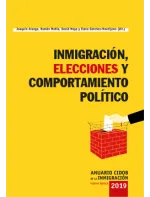Immigration and territorial dynamics in Spain: crisis and recovery (2008–2017)

Recent migrations in Spain have been seen in the light of the crisis (lower immigration, return to country/region of origin and remigration) and of incipient economic recovery (return to Spain and resumption of immigration). A territorial perspective must be added to this analysis and is the subject of this paper, because immigration – which had helped bring dynamism to various metropolises and certain rural spaces – was altered as of 2008. At the metropolitan level, peri-urban areas become places of expulsion and lose their capacity to attract. At the same time, the flows that had contributed to the tentative demographic recovery of certain rural municipalities decrease. In sum, major territorial transformations resulted that have, in turn, changed during the present economic recovery.
Authors:
Raimundo Otero-Enríquez, Profesor ayudante doctor de Sociología, Universidade da Coruña ; Joaquín García-Abad, Sociólogo, Máster en Metodología de la Investigación en Ciencias Sociales, Universidade da Coruña; Josefina Domínguez-Mujica, Catedrática de Geografía Humana, Universidad de Las Palmas de Gran Canaria and Antía Pérez-Caramés, Profesora contratada doctora de Sociología, Universidade da Coruña
Key Words: Spain, internal migration, external migration, municipal typology, economic crisis, economic recovery, territory
How to cite this article: Otero-Enríquez, Raimundo; García-Abad, Joaquín; Domínguez-Mujica, Josefina; Pérez-Caramés, Antía. «Inmigración y dinámicas territoriales en España: crisis y recuperación (2008-2017)». Anuario CIDOB de la Inmigración 2019 (noviembre de 2019), p. 190-217. DOI: doi.org/10.24241/AnuarioCIDOBInmi.2019.190
DOI: doi.org/10.24241/AnuarioCIDOBInmi.2019.190
>> The full text articles of this issue are available only in Spanish language